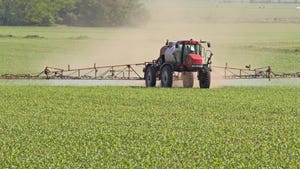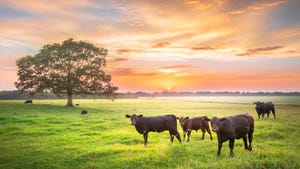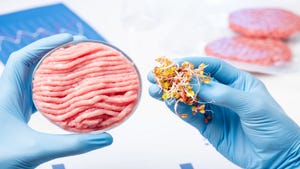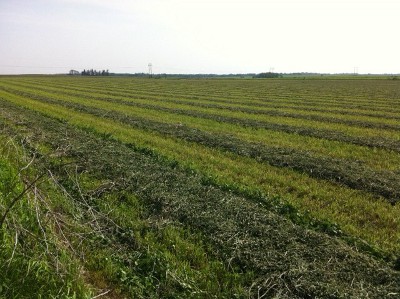
The first fields of Roundup Ready alfalfa are being planted and managed this year since USDA deregulated the crop. Crop protection companies are suggesting how growers of the herbicide-tolerant alfalfa can manage the new crop’s weed control program.
Syngenta states that glyphosate can be applied to the herbicide-tolerant alfalfa at any stage of growth from preplant to five days before cutting.
Syngenta cites a study conducted by the Panhandle Research and Extension Center, Scottsbluff, NE. The study found that if weeds were removed using glyphosate shortly after alfalfa emergence and again in several weeks after later flushes of weeds had emerged, the alfalfa plant could be protected from weed interference and stand establishment could be further enhanced.
“This study found that removal of weeds at the unifoliate and again at the fourth trifoliate growth stages provided the greatest alfalfa yield,” reports Cole Anderson, Syngenta field agronomist. “Of course, the more weeds removed, the higher the quality and yield potential in your establishment year.”
A small percentage of seeds in the bag may not have the herbicide tolerance trait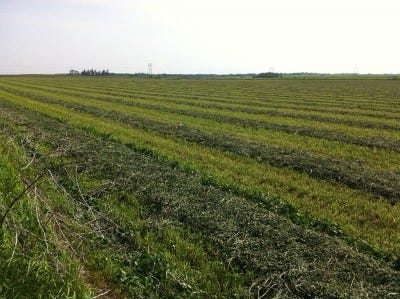 ; therefore an early application of glyphosate-based herbicide is encouraged to remove these plants before they become dominant plants within the stand.
; therefore an early application of glyphosate-based herbicide is encouraged to remove these plants before they become dominant plants within the stand.
Growers are encouraged to talk to a local agronomist or seed dealer to understand how to implement an integrated weed management practice in the alfalfa stand. The amount of glyphosate used should be dictated by the type and density of weeds.
About the Author(s)
You May Also Like



